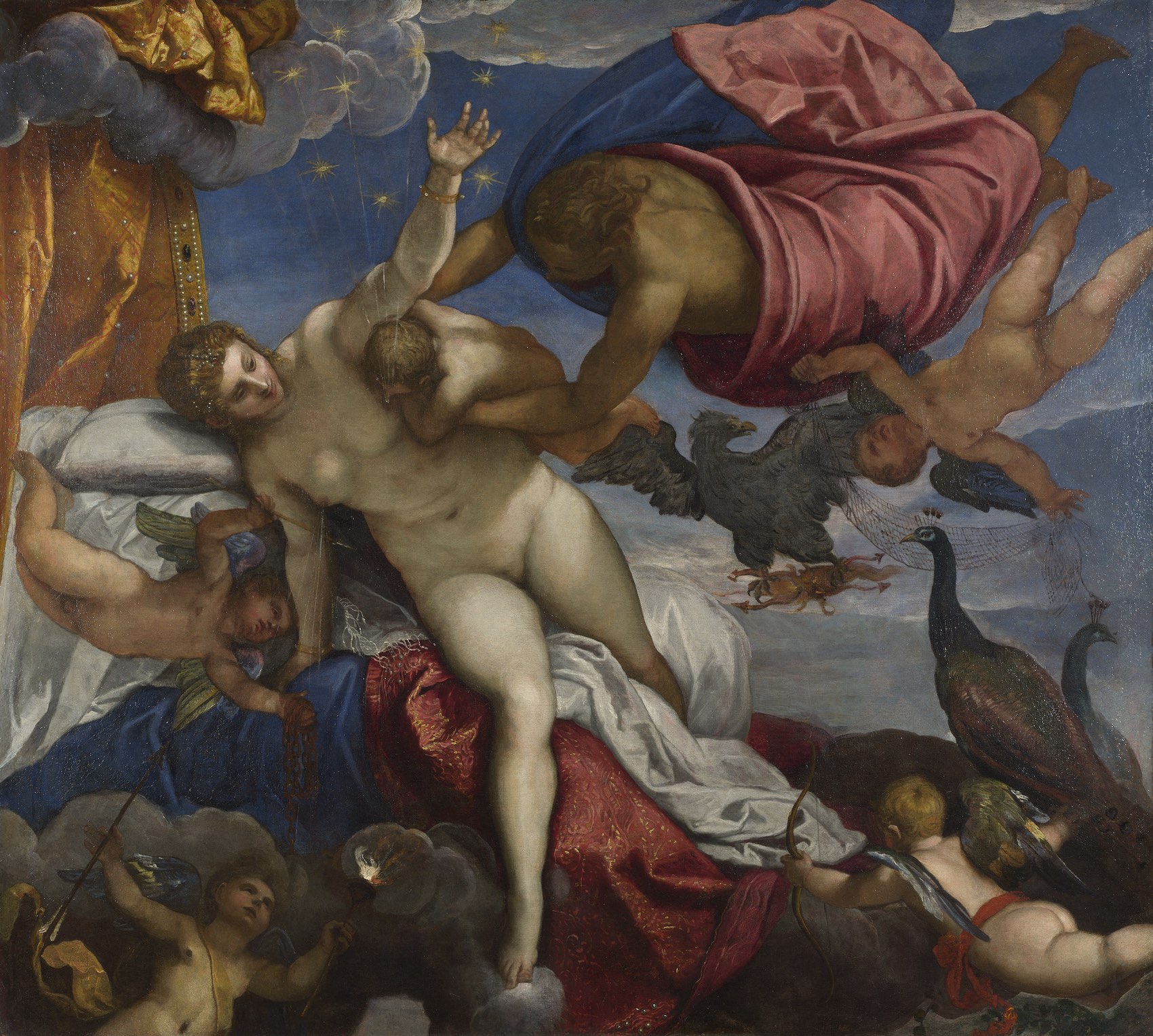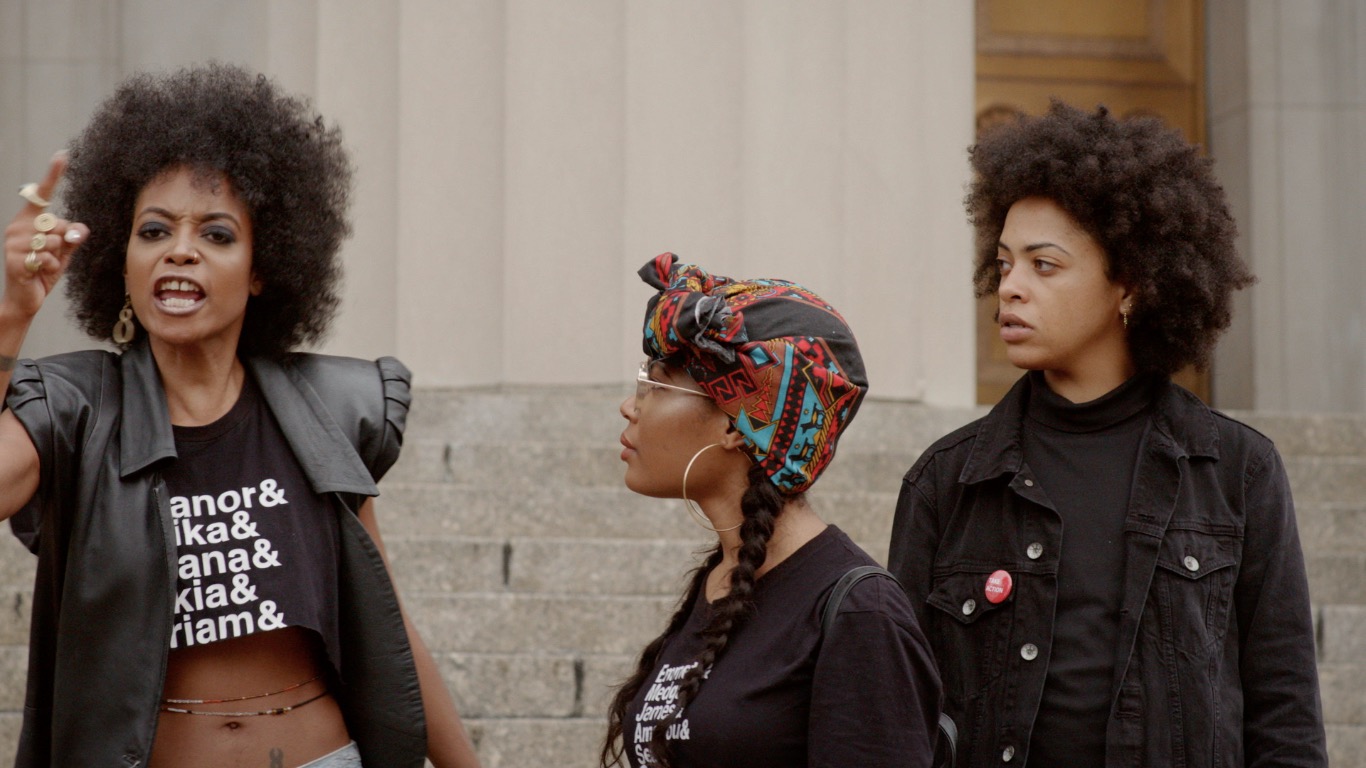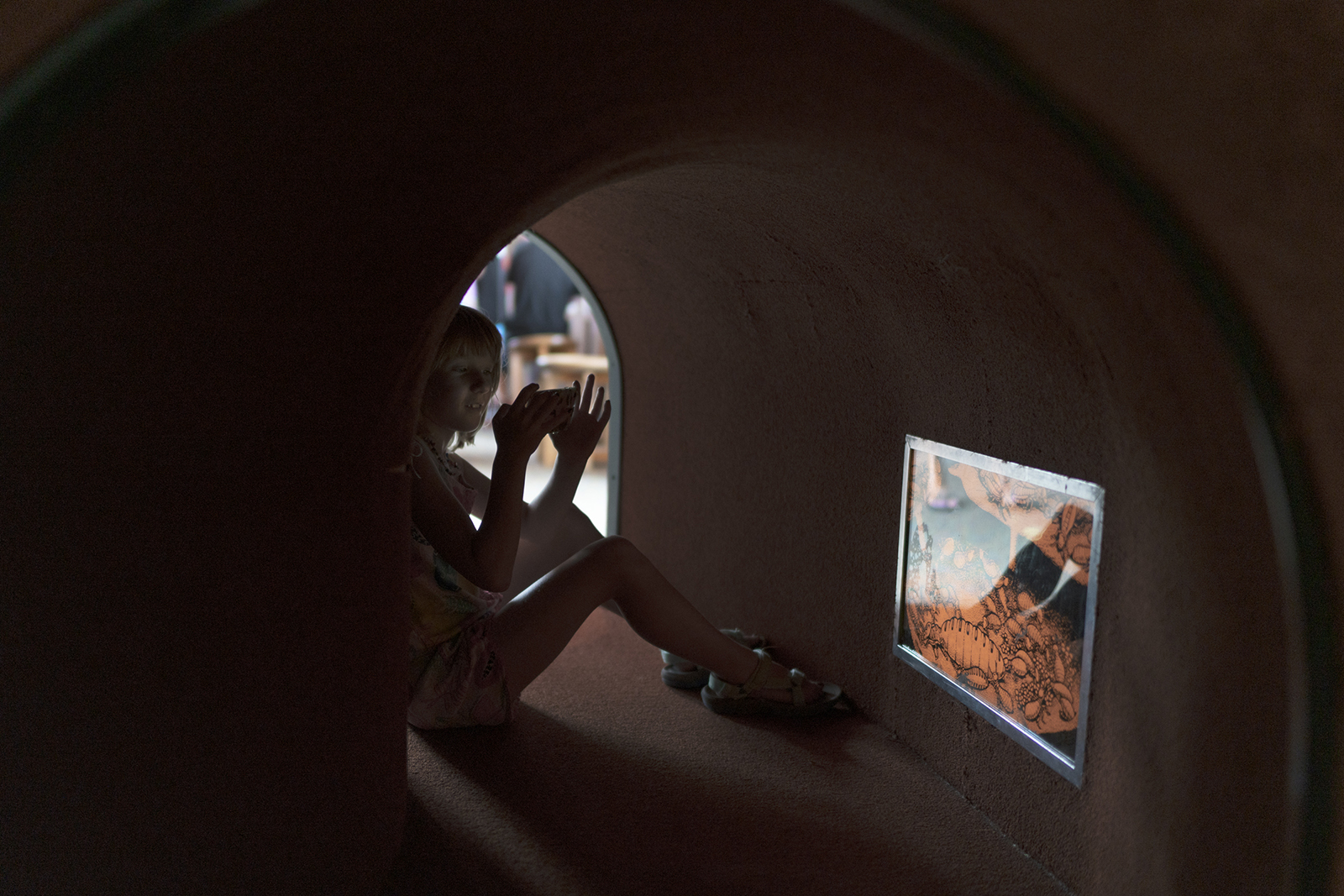If you were to walk straight into the first gallery of Kaitlin Jencso’s show at Hamiltonian Gallery, your line of sight would fall head-on to a dark, somewhat abstract photograph. As you walked closer, you would realize that it isn’t abstract—the range of shadow tones are just so controlled that the image’s forms emerge slowly, without announcement. Up close, the image is quite clear: A young girl sits in a tunnel with a small screen displaying a drawing. She is looking at this screen though another screen, her cell phone. The light from the screen, the glow of the cell phone light on her face, and the backlight from the background outside of the tunnel are the only points of illumination in this image.
In this photo, Untitled (National Mall), Jencso manipulates our attention to be just as glued to the devices as the girl in the image appears to be. For both viewer and subject, our experiences are mediated by devices. This world of cool depth and multiplicities of screens creates a sense of constant descent, like a rabbit hole in Alice in Wonderland. Where are we going, and what other digital layers might we add to this experience? After all, why stop with only two devices?
Jencso’s solo show Looking Glass, on view at Hamiltonian in Washington, DC through May 11, is full of quiet but intensely intriguing images depicting everyday life. The images kick up questioning about how we record our world, and how our records are far more constructed than spontaneous. Looking Glass reveals how often what we capture from our lives is not a pure documentation, but rather a version of the experience that looks best on the digital. Jencso’s past works have explored intimate themes of time, melancholy, and the timbre of human connections. Looking Glass iterates on these concepts and becomes a meditation on how everyday life features the digital as an active intercessor for shaping, and perhaps distorting, individual memories.
Printed on aluminum and hung without frames, the photographs in Looking Glass feel both casual and intentional, with some hung higher than others, some side by side, and several with abundant white wall space. The images render themselves like tidbits of a memory that ebb and flow into moments of utter clarity, and then again into vague cloudiness.
The connecting thread across these pieces is their composition. The shots are framed to capture a naturally occurring symmetry of shapes, but not so symmetrical as to be totally uninterrupted by the ever-changing surroundings in which they exist. Jencso’s work expertly walks this line. Each photograph documents an everyday moment that is as odd as it is expected.

Kaitlin Jencso, Untitled (PG County), 2019
Untitled (PG County) is alarmingly eerie. Six inflatable plastic princesses and mermaids hang upside-down on a line of wire at a carnival. The contours of their shapes catch an intense artificial light and their repeated vertical forms are mimicked by a metal barrier behind them. The bucket at the bottom central part of the image seems to be waiting to catch an unknown impending doom surrounding the dolls. A brightly lit carnival ride peeks out from behind with its circular top form recapturing the bucket’s shape. Each individual element of the image—the lights, inflatable prizes, fenced-off areas—is a classic representation of the fun, happy-go-lucky space of a carnival. Yet, woven together through Jencso’s lens, the entire scene is weighted with somber artifice. We begin to wonder, who is all this plastic fun even for?

Kaitlin Jencso, Untitled (15th Street), 2019
Untitled (15th Street) also confronts ideas of artifice in the form of a birthday dinner. The image is taken from behind, as if to peek into a private moment, endowing the photo with the aura of an anthropological document. As viewers, we feel like we’re examining a social phenomenon, not experiencing the emotional excitement of the party. The photograph doesn’t capture the experience, but instead collects the evidence of all the versions of this experience that we don’t see.
One young woman in this photo is particularly striking with her extreme gesture of taking a photograph of the birthday girl blowing out the candles. Her arms create a halo around the head of another woman sitting in front of her, entranced by the image on her phone, mentally disconnected from the main event. The flashes of light coming from all the phones are pure white, flooding the composition with aggressive spheres of brilliance. The lights encircle the scene creating a cage; the women lean and contort their bodies into uncomfortable positions; the smoke is the only evidence of a candle, suggesting a fire rather than cheerful sparklers. The entire image soon reads with a kind of violence bringing it into the surreal. The scene feels terribly familiar and oddly pathetic, the joy of a birthday fully eclipsed by the obsession for a perfectly framed moment to concretize into a memory.

Kaitlin Jencso, Untitled (Rhode Island Avenue), 2019
Jencso’s show also includes many images that are not figurative. Untitled (Rhode Island Avenue) depicts a residential city street in the evening, with orange light glowing inside a series of houses, and a bright blue sky above. A tree’s silhouette falls down from the top of the photograph, and the image reads as fairly straightforward, until the viewer comes upon the white dots which scatter down the sky’s center. We assume the white dots are stars due to their placement, but they do not glitter with subtlety, and instead pronounce themselves as oddly precise and placed. The scene’s familiarity is ruptured by these “stars,” which feel more like a mistake in nature than reality. Here, the digital replica of the scene is incongruous with how our real-life perception of the scene would be. Which version should we take as reality?
While this image is quite powerful, it contrasts greatly with the figurative works, augmenting the aesthetic and conceptual superiority of the images that feature people or figurative elements. The photo of the residential street is intellectually perplexing, but the scenes with people provoke an anguished isolation that sits at the end of this digitally ruptured life. Even the carnival photograph is saturated with an affected humanity in a perpetual freefall or a frozen suspension, while the non-figurative works are unable to cross into that realm.
Jencso is masterful in the balance of delicate and aggressive elements in her work. Using the quietest of moments, she slowly reveals deep paradoxes that are coming to define our psyches in an age built by the digital.
Looking Glass is on display at Hamiltonian Gallery through May 11. For more information, visit Hamiltonian’s website.
Images courtesy Hamiltonian Gallery.






